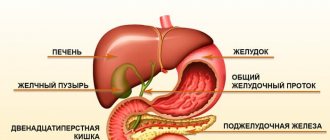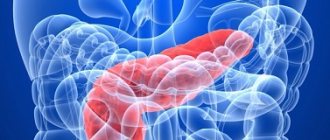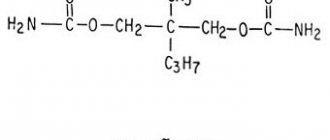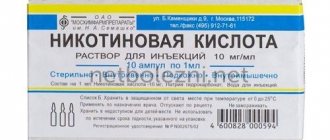Laxatives are one of the most requested drugs in any pharmacy, and all of them are over-the-counter drugs, or OTC drugs, that is, they come to pharmacy visitors directly from the hands of the pharmacist, bypassing the doctor. This places responsibility on the pharmacist who recommends this or that drug. What do you need to know about the problem of constipation in order to select and recommend a drug that is suitable for a particular buyer? Let's figure it out.
CC dossier
Elena Yurievna Shvedkina
endocrinologist, St. Petersburg
What is constipation (obstipatio, constipatio) - long-term (more than 48 hours) retention of feces in the intestines or insufficient, difficult bowel movements, a feeling of incomplete or prolonged evacuation of feces or hard, dry feces. The frequency of bowel movements in healthy people varies widely, from three times a day to three times a week. The World Health Organization classifies constipation as a disease in ICD-10 (code K59.0). Whereas the World Organization of Gastroenterology and the American Gastroenterological Association believe that constipation is not a disease, but a symptom . Leading Russian gastroenterologists share their position.
Most people with constipation never seek medical help, so the prevalence of constipation is difficult to estimate. According to generalized data from population studies, up to 20% of the adult population of developed countries suffers from constipation. Women and older people are more likely to develop constipation.
Constipation can be divided into functional (associated with impaired intestinal dynamics, “ habitual constipation ”) and organic (associated with persistent narrowing of the intestinal lumen and difficulty in passing feces).
The main causes of constipation may be:
- diet (lack of fiber in the diet and insufficient fluid intake);
- sedentary lifestyle;
- diseases of the gastrointestinal tract (peptic ulcer, chronic pancreatitis, dysbiosis, irritable bowel syndrome, colon tumors, strictures, ischemia, volvulus, diverticula, megacolon and dolichosigma);
- diseases of the anus (anal fissures, hemorrhoids, paraproctitis), accompanied by pain and preventing bowel movements;
- neurological diseases (stroke, spinal cord injury, multiple sclerosis, trauma, Parkinson's disease);
- diseases of the endocrine system (hypothyroidism, diabetes mellitus, Addison's disease, pheochromocytoma, etc.);
- taking certain medications (atropine, opiates, antidepressants, NSAIDs, antihistamines, calcium channel blockers and many others);
- depression, anorexia, schizophrenia and other mental illnesses;
- late pregnancy and early postpartum period.
- Risk factors for developing constipation:
- age over 55 years;
- recent surgery on the abdominal or pelvic organs;
- pregnancy;
- restriction of physical activity;
- an inadequate diet can also cause constipation;
- excess body weight;
- taking multiple medications, especially in old age;
- uncontrolled use of laxatives;
- terminal stages of diseases, long comas.
In addition to the fact that constipation is often accompanied by heaviness in the abdomen, flatulence and pain during defecation, prolonged constipation leads to dangerous complications such as intestinal obstruction, colon diverticulosis, rectal prolapse, hemorrhoidal bleeding . A terrible complication of long-term constipation is colon cancer : when the evacuation of intestinal contents is impaired, carcinogenic compounds that damage the mucous membrane are formed. According to the Central Research Institute of Gastroenterology for 2011, the incidence of colorectal cancer in patients suffering from constipation is 4.5%. Constipation itself can often be the first sign of serious neurological (for example, Parkinson's disease), endocrine, gastrointestinal and oncological diseases.
Treatment of constipation primarily comes down to eliminating their causes, normalizing lifestyle and nutrition, physical activity, as well as periodically taking laxatives, but only in cases where other measures are not effective enough!
Stimulant laxatives
Stimulants of peristalsis (intestinal contractions) are irritating substances that act on nerve endings in the intestinal mucosa 3,4,5,6,7.
Medicines with an irritating effect can act on different parts of the digestive tract3,4,5:
- the small intestine is the zone of action of castor oil and laxative resins;
- The activity of the colon is increased by preparations of senna, buckthorn, rhubarb, sulfur, sodium picosulfate and diphenylmethane derivatives.
They also secrete drugs that are converted into an active form under the influence of intestinal enzymes, so they “work” in both the small and large intestines3,4,5,6.
It is important to remember that if you abuse stimulant laxatives, side effects are possible:
- Diarrhea with cramping pain in the abdomen . Due to diarrhea, the body loses the potassium, sodium and chloride ions it needs. With their deficiency, general weakness is a concern, and due to an imbalance of ions, there is a likelihood of arrhythmias and a decrease in blood pressure5,16.
- The "lazy gut" phenomenon . “Lazy” is a colon that has become an enlarged tube that has lost its tone. Without taking large doses of laxatives, it is unable to contract and move stool. This often happens if the drug accumulates in the colon mucosa and its nerve plexuses, and then destroys the smooth muscles that push feces1,5,16.
Lazy bowel syndrome is manifested by the progression of constipation, which is difficult to correct2,5. Due to rapid addiction7, peristalsis stimulants are not recommended for use for more than 14 days5,16.
Up to contents
Osmotic drugs
Unlike stimulants, osmotic laxatives act differently. They include:
- non-absorbable carbohydrates - lactulose,
- high molecular weight polymers - macrogol.
This type of laxative has a complex effect:
- retains water in the body,
- increases the volume of intestinal contents,
- increases osmotic pressure in the small intestine.
Osmotic preparations stimulate peristalsis and the proliferation of lactic acid bacteria and increase acidity. Such remedies are effective for chronic constipation and hepatic encephalopathy. Despite the pronounced laxative effect and rapid action, osmotic laxatives also have contraindications:
- hypersensitivity to lactulose,
- galactosemia,
- intestinal obstruction,
- glucose intolerance.
Patients with diabetes should use laxatives with caution. With long-term use, side effects may develop: diarrhea, flatulence, impaired absorption of sodium salts, potassium and other vital trace elements.
Drugs that increase the volume of intestinal contents
Bulk laxatives retain water, swell and stretch the intestinal walls with increased volume. Excessive distension triggers peristalsis and bowel movements are accelerated17.
This group of drugs includes3,16:
- alimentary fiber;
- osmotic laxatives - macrogol, lactulose, salts.
The listed medications are difficult to digest, and some are not digested at all, so they are practically not absorbed through the mucous membrane into the blood17.
Alimentary fiber
Dietary fiber (fiber) is found in bran, seaweed, psyllium seed hulls and flax14. They are also found in vegetables and fruits. Fiber can swell in the intestinal lumen, increasing the mass of feces, which mechanically irritates the intestinal wall3,7. But the effect does not appear immediately, but after 10 days, sometimes you have to wait up to 3 weeks for results6.
To get a laxative effect when using dietary fiber, do not forget to drink enough water3 - 1.5-2 liters per day17, because to increase the volume of feces, fiber must absorb a lot of liquid3,7.
When choosing between wheat bran and psyllium, you should keep in mind that wheat bran can cause flatulence7,16. Therefore, elderly people are advised to use psyllium seeds, which are better tolerated16.
Macrogol
Products based on polyethylene glycol (macrogol) are poorly absorbed substances6,9. Thanks to this property, they are able to retain fluid in the intestinal lumen7,9.
Macrogol does not cause dehydration, but only slows down water absorption14. After taking a laxative, the stool becomes thinner, its consistency improves, and the frequency of bowel movements increases7.
The disadvantage of macrogol is a rather slowly developing effect and intestinal hypotension1, and the main side effect is potentiation of fecal incontinence7. According to the instructions, the recommended duration of taking macrogol is up to 14 days8.
Saline laxatives
Concentrated salts - magnesium sulfate, sodium sulfate, Carlsbad salt8, 9 - act at the level of the small intestine and increase the osmotic pressure in it17. On the one hand, this attracts fluid into the intestinal lumen1,4,5,6,7, and on the other, it retains water in it7,8.
Under the influence of salts, feces become liquid, like diarrhea, and are easily excreted,8,17.
But it is precisely because of severe diarrhea that salt laxatives are not suitable for long-term use. With the constant release of loose stools, imbalances in water and ions may occur17. Also, these drugs are not recommended for people with kidney and heart diseases, because salts can be absorbed into the bloodstream in minimal quantities and retain water in the body14. When using Carlsbad salt, a problem for patients may be its unpleasant taste8.
Lactulose
Lactulose has a laxative effect not directly, but with the help of beneficial bacteria. Using it as food10, 13, bifidobacteria and lactobacilli that live in the intestines secrete substances that act like osmotic laxatives7,10,13,17. But at the same time, severe diarrhea does not occur, because lactulose “works” exclusively in the large intestine15,17.
The laxative effect of lactulose develops gradually:
- with a single dose every 24-48 hours;
- with systematic - after 2-4 hours15.
Since lactulose is not digested, it is practically not absorbed and has no systemic side effects15. Sometimes, if the dose is incorrectly selected, bloating may occur while using the drug15,17.
Up to contents
Etiology of constipation
In the development of physical diseases, social factors play a significant role, including stress, unhealthy lifestyle and nutrition (physical inactivity, lack of ballast substances in the diet, irregular meals, small amount of food, insufficient daily fluid volume, laxative abuse) [9, 10]. Normalizing nutrition and increasing physical activity, as a rule, lead to normalization of intestinal functions. This group includes nutritional, or, as M. Kamm puts it, simple constipation, caused by a deficiency of dietary fiber. In such patients, with the onset of the fruit and vegetable season, the stool usually returns to normal without additional treatment.
Hormonal imbalance during pregnancy, menopause, hypothyroidism, diabetes mellitus, hyperparathyroidism and other diseases also leads to physical dysfunction [11].
Constipation develops when taking certain medications (anticholinergics, opiates, tricyclic antidepressants, neuroleptics, antispasmodics, calcium channel blockers, laxatives, antacids containing aluminum and calcium, iron ions, diuretics, etc.), with cerebral and spinal disorders, depression, multiple sclerosis , dysregulation of the peripheral and enteric nervous systems [1, 11, 12]. Neurogenic constipation develops under the influence of stress (for example, with irritable bowel syndrome), a sudden change in the usual lifestyle or diet (long trips, flights).
Microclysters
For emergency release of the intestines from dense feces, laxatives in the form of microenemas can be used12. This form includes drugs with a combined mechanism of action, that is, working “together”. They subject feces to peptization (break down dense masses), increase its volume and make it soft2,11.
Microclysters are also used to correct constipation due to the “lazy colon” syndrome2.
Microenema MICROLAX® acts locally and has a mild laxative effect due to the presence in its composition11:
- sodium citrate, which displaces bound water from the feces;
- sodium lauryl sulfoacetate, which thins stool;
- sorbitol, which increases the flow of water into the intestinal lumen.
Thanks to the complex effect of the three components, the laxative effect occurs quickly - on average from 5 to 15 minutes, according to the instructions for use.
MICROLAX® is easy to use; no special knowledge or training is required11. The tube with a tip contains the required single dose of the drug, and the microenema format facilitates the use of a laxative, including for “fecal impaction” or preparation for rectal examination11.
MICROLAX® is approved for use in adults and children from birth11. It acts only on feces, softens them and facilitates bowel movements11. At the same time, the drug is not addictive and does not affect the function of other parts of the gastrointestinal tract.
Remember that laxatives do not eliminate the cause of constipation, they only reduce unpleasant symptoms. Their independent, prolonged or uncontrolled use can aggravate the course of the causative disease if stool retention is one of its manifestations2.
All laxatives should be taken only after consulting a doctor. To get rid of constipation comfortably and effectively, be sure to get examined by a therapist or gastroenterologist. Only a specialist will be able to take into account all contraindications, the risk of side effects and prescribe medications so that they are not addictive.
Combating constipation will require patience and a comprehensive approach. Changing your lifestyle, adjusting your diet, and physical activity will help restore bowel regularity2. It is important to follow the recommendations of a specialist, and if necessary, use laxatives prescribed by a doctor.
The information in this article is for reference only and does not replace professional advice from a doctor. To make a diagnosis and prescribe treatment, consult a qualified specialist
Up to contents
Laxatives
Laxatives
- medicines that facilitate bowel movements and are used to treat constipation. There are no clear criteria for choosing any type of laxative, but it is reliably known that monotherapy with one drug has a worse result (Leites Yu.G. et al.). Dynamic observation showed that after 5 years of use only half of the patients responded to the same laxatives, and after 10 years - only 11% (Makhov V.M., Beresneva L.A.).
Laxatives are also used in preparing the colon for instrumental examinations (colonoscopy, anorectal and colonic manometry, X-ray examination), and for surgical interventions that require preliminary cleansing of the intestine (see: “Preparation of the colon for instrumental examinations”).
American Gastroenterological Association on Laxatives
In the brochure “Understanding Constipation” (in Russian: “Constipation. The essence of the problem”) of the American Gastroenterological Association it is written: “Misconceptions about the nature and mechanisms of constipation lead to excessive consumption of laxatives.
Americans spend $725 million on laxatives every year. Many of them are unnecessary and regular use of some stimulant laxatives can lead to drug dependence.” Below is a brief description of laxatives from the brochure mentioned: Stool bulkers
(alimentary fiber). This type of laxative is taken with water. They absorb fluid in the intestines and can make stools softer. These are generally safe laxatives, but they may interfere with the absorption of some medications. Some patients find that this type of laxative does little to improve constipation and that they may increase rumbling and abdominal pain.
Peristalsis stimulants
cause rhythmic contractions of the intestinal muscles. Research suggests that phenolphthalein, a component of some stimulant laxatives, may increase the risk of cancer. The FDA has proposed banning the over-the-counter availability of drugs containing phenolphthalein. Most laxative manufacturers have replaced or plan to replace phenolphthalein with a safe ingredient.
Osmotic laxatives
cause fluid to flow in the colon in a special way, resulting in an increase in the volume of intestinal contents.
This class of medications is used for people with idiopathic constipation (that is, constipation for which the cause is unknown). Diabetic patients should be monitored for electrolyte imbalance when taking osmotic agents. Softeners (plasticizers)
soften the stool and prevent dehydration. These laxatives are often recommended after childbirth or surgery. Plasticizers are recommended for patients who should avoid straining during bowel movements. Long-term use of this class of laxatives can lead to electrolyte imbalance.
Lubricants
the products allow stool to move more easily through the intestines thanks to lubrication. The most common example is mineral oil. Lubricant laxatives usually stimulate bowel movements for eight hours.
Saline laxatives
act like a sponge, drawing fluid into the colon to make stool easier to pass. Saline laxatives are used to treat acute constipation and if there is no intestinal obstruction. With long-term use, they can cause electrolyte imbalances, especially in young children and people with kidney failure.
Chloride channel activators
increase the amount of fluid in the intestines, as well as its motility, thereby improving the passage of stool and reducing the symptoms of constipation. After using these drugs, the doctor should assess the need for their continued use.
Trade names and active ingredients of laxatives described in this directory
- Contact laxatives:
- Bisacodyl
- Castor oil
- Active ingredient: phenolphthalein: Purgen.
- Active ingredient: cascara
- Active ingredient lactulose: Duphalac, Normaze.
- Active ingredient lactitol: Exportal.
- Active ingredient macrogol (polyethylene glycol): Forlax, Fortrans, Lavacol.
- Sorbitol.
- Mannitol (mannitol).
- Active ingredient: sodium phosphate (Fleet Phospho-soda).
- Active ingredient of plantain seed shell (isfagul): Mucofalk, Metamucil.
- Active ingredient: methylcellulose: Citrucel.
- The active substance is calcium polycarbophil.
- Active ingredient: linaclotide
- Active ingredient: plecanatide
- solutions of sodium salts of phosphoric acids: Enema Clean, Fleet Enema
- solution of sodium citrate, sodium lauryl sulfoacetate and sorbitol: Microlax
Patient materials regarding laxative use
- “Constipation (constipation, obstipation)”
- "10 ACG Tips for Constipation and Fecal Incontinence"
- American Gastroenterological Association brochure “Constipation. The crux of the problem." Part I and Part II.
The GastroScan.ru website contains materials for patients on various aspects of gastroenterology:
- “Advice from doctors” in the “Patients” section of the site
- “Popular gastroenterology” in the “Literature” section
- “Popular gastroenterology” in the “Video” section
Some resources for healthcare professionals
Clinical and methodological recommendations, articles
- Ivashkin V.T., Maev I.V., Sheptulin A.A. and others. Clinical recommendations of the Russian State Administration for the diagnosis and treatment of adult patients with chronic constipation // Ros journal. gastroenterol., hepatol., coloproctol. – 2021. – 27(3). pp. 75-83.
- Parfenov A.I., Indeikina L.H., Belyaeva A.A. etc. Chronic constipation. Methodological recommendations // GBUZ Moscow. wedge. scientific Center TsNIIG. - M.: Prima Print, 2021. - 52 p.
- Luzina E.V., Tomina E.A., Zhilina A.A., Lareva N.V., Fedorova L.V. Treatment of constipation in the practice of a therapist / Materials of the 1st Congress of Therapists of the Trans-Baikal Territory. - Chita: RIC ChSMA, 2013. - P. 38-42.
- Vyalov S.S. Chronic constipation: etiology and treatment options // Doctor.Ru. Gastroenterology. 2015. No. 12 (113). pp. 42-49.
On the website GastroScan.ru in the literature catalog there are sections “Laxatives” and “Constipation and Diarrhea”, containing professional medical articles relating to laxatives and their use for constipation.
Video
Still from the video “Komarov O.N. Features of the gastrointestinal tract in patients with SMA. Basic violations and their correction.”
Appendix 1. Classification of laxatives according to ATC
In the Anatomical Therapeutic Chemical Classification (ATC) there is a section “A06 Laxatives”, which includes one, identical in name to the section, subsection A06A “Laxatives”, which, in turn, includes the following groups and drugs:
A06AA Emollient drugs
A06AA01 Liquid paraffin A06AA02 Sodium docusate A06AA51 Liquid paraffin in combination with other drugs
A06AB Contact laxatives
A06AB01 Acetphenolysatin A06AB02 Bisacodyl A06AB03 Danthrone A06AB04 Phenolphthalein A06AB05 Castor oil A06AB06 Senna glycosides A06AB07 Cascara A06AB0 8 Sodium picosulfate A06AB09 Bisoxatine A06AB20 Combination of contact laxatives A06AB30 Combination of contact laxatives with belladonna alkaloids A06AB52 Bisacodyl in combination with other drugs A06AB53 Danthrone in combination with other drugs A06AB56 Senna glycosides in combination with other drugs A06AB57 Cascara in combination with other drugs A06AB58 Sodium picosulfate in combination with other drugs
A06AC Laxatives that increase the volume of intestinal contents
A06AC01 Isphagula (plantain oval or flea beetle) seeds) A06AC02 Etulose A06AC03 Sterculia A06AC05 Flax seed A06AC06 Methylcellulose A06AC07 Trititium (wheat fiber) A06AC08 Calcium polycarbophil A06AC51 Isphagula in combination with other drugs A06AC53 Sterculia in combination with other drugs A06AC55 Flax seed in combination with other drugs A 06AD Osmotic
laxatives
A06AD01 Magnesium carbonate A06AD02 Magnesium oxide A06AD03 Magnesium peroxide A06AD04 Magnesium sulfate A06AD10 Combination of mineral salts A06AD11 Lactulose A06AD12 Lactitol A06AD13 Sodium sulfate A06AD14 Pentaerythrityl tetranitrate A06AD15 Macrogol A06AD16 Mannitol A06AD17 Sodium phosphate A06AD18 Sorbitol A 06AD19 Magnesium citrate A06AD21 Sodium tartrate A06AD61 Lactulose in combination with other drugs A06AD65 Macrogol in combination with other drugs
A06AG Laxatives in enemas
A06AG01 Sodium phosphate A06AG02 Bisacodyl A06AG03 Dantnon, including in combination with other drugs A06AG04 Glycerol A06AG06 Oil A06AG07 Sorbitol A06AG10 Sodium docusate, including in combination with other drugs A06AG11 Lauryl sulfate, including in combination with other drugs A06AG20 Combined laxatives
A06AH Peripheral opioid receptor antagonists
A06AH01 Methylnaltrexone bromide A06AH02 Alvimopan A06AH03 Naloxegol A06AH04 Naloxone A06AH05 Naldemedine
A06AX Other laxatives
A06AX01 Glycerol A06AX02 Carbon dioxide-forming drugs A06AX03 Lubi proston A06AX04 Linaclotide A06AX05 Prucalopride A06AX06 Tegaserod A06AX07 Plecanatide Back to section
Literature:
- Minushkin O.N. Functional constipation: dynamics of ideas, diagnosis, some therapeutic approaches. Medical advice. 2017; 20:92-95
- Turchina M.S. The use of complex laxatives in the treatment of chronic constipation. Medical advice. 2017; 5:77-79
- Minushkin O.N. Chronic constipation (definition, epidemiology, diagnosis): modern drug therapy. Medical advice. 2015; 13: 100-105
- Plotnikova E.Yu., Krasnov K.A. Constipation needs to be treated. Medical advice. 2018; 14:61-66
- Stepanov Yu.M., Vlasova O.N. et al. Negative effects of laxative abuse in medical practice. Gastroenterology. 2018; 52 (3): 168-173
- Luzina E.V. Safety of using laxatives. Russian medical journal. 2014; 5:41-44
- Parfenov A.I. Three options for the pathogenesis and treatment of chronic constipation. Gastroenterology. 2012; 3:7-19
- Plotnikova E.Yu. Modern ideas about constipation. Attending doctor. 08/2015
- Pharmacology of drugs affecting the function of the digestive organs: textbook by A.N. Leventa, L.B. Kuklina, S.G. Alexandrov, N.V. Verlan, L.O. Gutsol, I.Zh. Seminsky, O.V. Shabaturova; GBOU VPO IGMU of the Ministry of Health of Russia - Irkutsk, 2013. -112 pp. 102-103
- Global practical recommendations of the World Gastroenterological Organization. Probiotics and prebiotics. 2021 — 37 p.
- Instructions for use of MICROLAX® microenemas. // Reg. number P N011146/01 // GRLS of the Russian Federation. – URL: https://grls.rosminzdrav.ru/Grls_View_v2.aspx?routingGuid=f052fb31-5426-4bc1-958f-9fce793aa43f&t= (date accessed 05/05/2010).
- Erdes S.I., Matsukatova B.O. and others. Episodic and chronic constipation in children: a step-by-step approach to therapy within the framework of the IV Rome criteria. Pediatrics. Consilium Medicum. 2019; 1:71-76
- Constipation in young children: causes and features of dietary correction O.N. Komarova, A.I. Khavkin (Questions of modern pediatrics. 2014; 13 (1): 114–118
- Clinical recommendations. Constipation in adults (as a manifestation of systemic diseases). Scientific Society of Gastroenterologists of Russia (NOGR), Russian Scientific Medical Society of Therapists (RNSOT) - 2019
- Lactulose: arguments and facts. Yu.O. Shulpekova. EFFECTIVE PHARMACOTHERAPY. Gastroenterology. 5/2011 - pp. 28-71.
- Clinical guidelines: Constipation / Russian Gastroenterological Association. Association of Coloproctologists of Russia - 2021.
- Minushkin O.N. 1, Elizavetina G.A. Forlax in the treatment of chronic constipation: features of therapy for elderly patients / “Breast Cancer” No. 1 - 2006.
Up to contents
Watch in our video which laxative to choose for constipation: tablets, syrup or microenemas
Bulk laxatives
The effect of a bulk laxative is based on increasing the volume of intestinal contents. The composition of the drug includes plant fiber. Once in the intestinal lumen, it absorbs water and forms a mucous gel that softens the stool.
Normally, daily fiber intake should be 30-35 g. With food, a person usually receives no more than 10-15 g of plant fiber. Bulk laxatives replenish fiber deficiency and help solve the problem of constipation without harm to health. Today, such products are considered the safest and are recommended for use in children over 3 years of age, pregnant women and the elderly.
An effective bulk laxative with a natural composition - Fitomucil Norm. It contains two natural sources of fiber:
- Psyllium plantain seed shell,
- pulp of dried homemade plum fruits.
The complex contains no artificial colors, preservatives, flavors or flavor enhancers. Indications for use of Phytomucil norms:
- constipation, including in children over 3 years of age, pregnant and lactating women, elderly people, patients with diabetes,
- irritable bowel syndrome, accompanied by prolonged stool retention,
- haemorrhoids,
- anal fissures,
- intestinal dysbiosis,
- overweight,
- high blood sugar and cholesterol levels.








